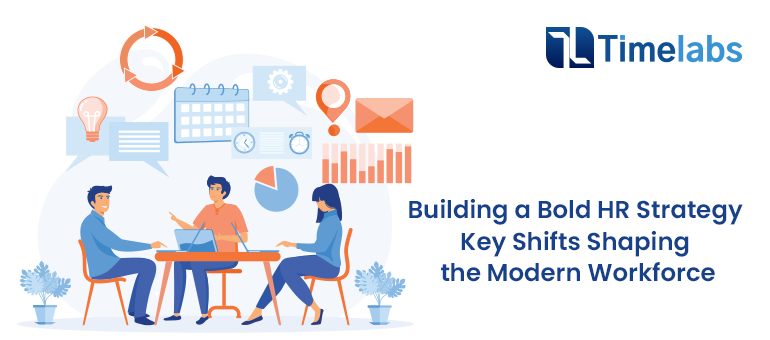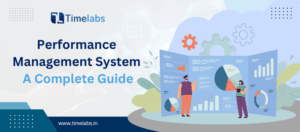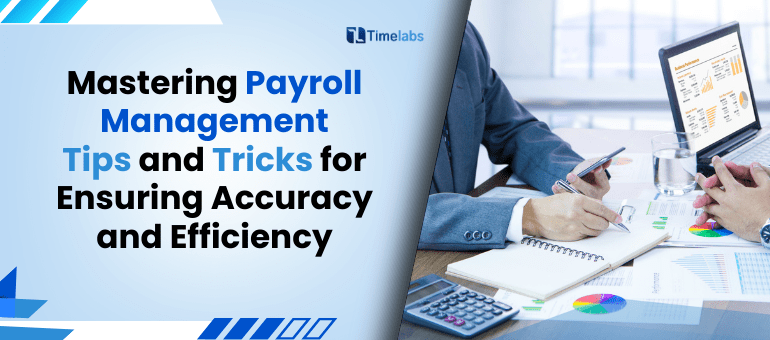The workforce is undergoing a significant transformation, driven by technological advancements, changing employee expectations, and evolving regulatory landscapes. Human Resources (HR) leaders must adapt to these shifts by crafting strategies that align with organizational goals while fostering employee engagement and operational efficiency. Companies like Timelabs are at the forefront, offering tools to streamline HR processes and empower businesses to navigate these changes effectively. This article outlines key shifts shaping the modern workforce and provides actionable strategies for HR leaders to build a resilient and forward-thinking approach.
The Rise of Technology in HR Operations

Technology has become a cornerstone of modern HR management, enabling organizations to optimize processes and enhance decision-making. Best HR Payroll Software streamlines payroll calculations, tax compliance, and employee compensation, reducing errors and saving time. By automating repetitive tasks, HR teams can focus on strategic initiatives like talent development and retention.
Automation is also reshaping workforce management. Tools that integrate scheduling, attendance tracking, and performance analytics provide real-time insights into employee productivity. For instance, Timelabs offers solutions that centralize workforce data, enabling HR leaders to make informed decisions quickly. As organizations scale, leveraging technology ensures consistency and accuracy across HR functions.
Adapting to Remote and Hybrid Work Models
The shift to remote and hybrid work has redefined workplace dynamics. Employees now prioritize flexibility, and HR strategies must accommodate these preferences while maintaining productivity. HRMS Software plays a critical role in managing distributed teams by centralizing employee data, tracking performance, and facilitating communication across locations.
To support hybrid work, HR leaders should implement policies that balance flexibility with accountability. For example, clear guidelines on work hours, virtual collaboration tools, and regular check-ins can maintain alignment. Timelabs provides platforms that integrate time tracking and task management, ensuring seamless coordination for remote and in-office employees. These tools help HR teams monitor workforce engagement while respecting employee autonomy.
Key Steps for Supporting Hybrid Work
- Define clear expectations for remote and in-office work.
- Use technology to track attendance and project progress.
- Foster a culture of trust through transparent communication.
- Provide training on virtual collaboration tools to enhance efficiency.
Enhancing Employee Experience Through Personalization
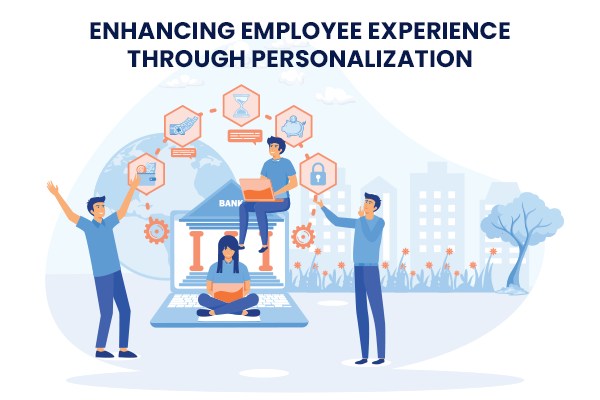
Employee expectations have shifted toward personalized experiences, from tailored benefits to career development opportunities. HR Document Management systems simplify the storage and retrieval of employee records, ensuring compliance and easy access to personalized data. This allows HR teams to customize onboarding, training, and benefits administration based on individual needs.
Personalization also extends to employee engagement. HR leaders can use data analytics to understand employee preferences and design programs that boost satisfaction. For example, offering flexible benefits packages or personalized learning paths can increase retention. By leveraging tools like those from Timelabs, organizations can create a supportive environment that aligns with employee goals.
Navigating Compliance and Data Security
Regulatory compliance is a growing challenge for HR teams, particularly with evolving labor laws and data protection regulations. Best HR Payroll Software ensures accurate tax filings and adherence to local regulations, reducing the risk of penalties. Automated systems also provide audit trails, making it easier to demonstrate compliance during inspections.
Data security is equally critical, as HR departments handle sensitive employee information. HR Document Management solutions with robust encryption and access controls protect confidential data from breaches. HR leaders should prioritize platforms that comply with global standards like GDPR or CCPA, ensuring both security and trust. Investing in secure systems mitigates risks and builds employee confidence in data handling practices.
Strategies for Ensuring Compliance
- Regularly update HR systems to reflect new regulations.
- Train staff on data security best practices.
- Use automated tools to generate compliance reports.
- Partner with vendors offering secure, compliant solutions.
Fostering a Culture of Continuous Learning
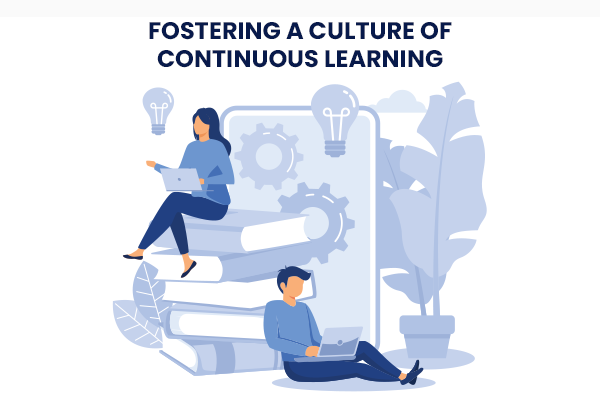
The rapid pace of technological change requires employees to upskill continuously. HR strategies should prioritize learning and development programs that align with industry trends. HRMS Software can track employee training progress, recommend courses, and measure skill acquisition, ensuring alignment with organizational needs.
Creating a culture of continuous learning involves more than just offering courses. HR leaders should encourage mentorship, cross-functional collaboration, and knowledge-sharing initiatives. By integrating learning management into HR platforms, organizations can provide employees with accessible resources to grow their skills, ultimately driving innovation and competitiveness.
Streamlining Recruitment and Talent Acquisition
Attracting top talent in a competitive market requires a strategic approach to recruitment. Best HR Payroll Software can integrate with recruitment modules to streamline candidate tracking, payroll forecasting, and onboarding processes. This ensures a seamless transition from hiring to employment, reducing administrative burdens.
HR leaders should also leverage data to refine recruitment strategies. Analyzing candidate demographics, skill sets, and hiring trends can identify gaps and improve outreach. For example, using analytics to target passive candidates or optimize job postings can yield better results. Tools that centralize recruitment data help HR teams make data-driven decisions to attract and retain high-quality talent.
The Role of Analytics in Strategic HR Decisions
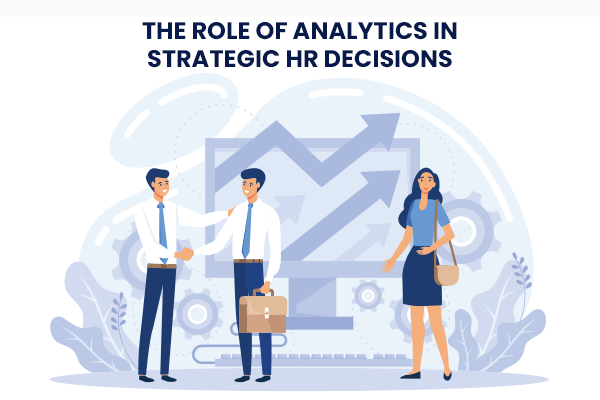
Data analytics is transforming HR from a reactive to a proactive function. By analyzing workforce metrics, HR leaders can predict turnover, identify high performers, and optimize resource allocation. HRMS Software with built-in analytics provides insights into employee engagement, productivity, and retention trends.
For instance, predictive analytics can flag potential disengagement before it leads to turnover, allowing HR to intervene early. Similarly, analyzing payroll data can uncover cost-saving opportunities without compromising employee satisfaction. By adopting data-driven strategies, HR teams can align their efforts with broader business objectives, driving measurable outcomes.
Integrating Sustainability into HR Practices
Sustainability is emerging as a key consideration in HR strategy. Employees increasingly value organizations that prioritize environmental and social responsibility. HR Document Management systems can reduce paper usage by digitizing records, contributing to eco-friendly practices. This aligns with broader corporate sustainability goals and enhances employer branding.
HR leaders can also promote sustainability through employee programs. Initiatives like remote work policies, green commuting incentives, or volunteer opportunities can engage employees in meaningful ways. By embedding sustainability into HR practices, organizations demonstrate a commitment to values that resonate with the modern workforce.
Must Read: How to Keep Employees Productive Without Killing Festive Spirit?
Conclusion
Building a bold HR strategy requires adapting to technological advancements, evolving employee expectations, and regulatory complexities. By leveraging tools like Best HR Payroll Software, HRMS Software, and HR Document Management systems, HR leaders can streamline operations, enhance employee experiences, and drive organizational success. Companies like Timelabs provide integrated solutions that empower HR teams to navigate these challenges efficiently. By focusing on automation, personalization, compliance, and sustainability, HR leaders can position their organizations for long-term resilience and growth.
FAQs
Q1. What are the benefits of using HRMS software for small businesses?
Ans: HRMS Software centralizes employee data, automates payroll, and streamlines compliance, saving time and reducing errors for small businesses with limited resources.
Q2. How can HR document management improve compliance?
Ans: HR Document Management systems ensure secure storage, easy retrieval, and audit-ready records, helping organizations stay compliant with labor and data protection laws.
Q3. Why is payroll software critical for modern HR teams?
Ans: Best HR Payroll Software automates complex calculations, ensures tax compliance, and reduces manual errors, allowing HR teams to focus on strategic priorities.
Q4. How does technology support hybrid work environments?
Ans: Technology, including HRMS Software, enables seamless communication, time tracking, and performance management for remote and in-office employees, fostering collaboration and accountability.
Q5. What role does data analytics play in HR strategy?
Ans: Data analytics, integrated into tools like HR Document Management and payroll systems, provides insights into employee engagement and turnover, enabling proactive decision-making.
